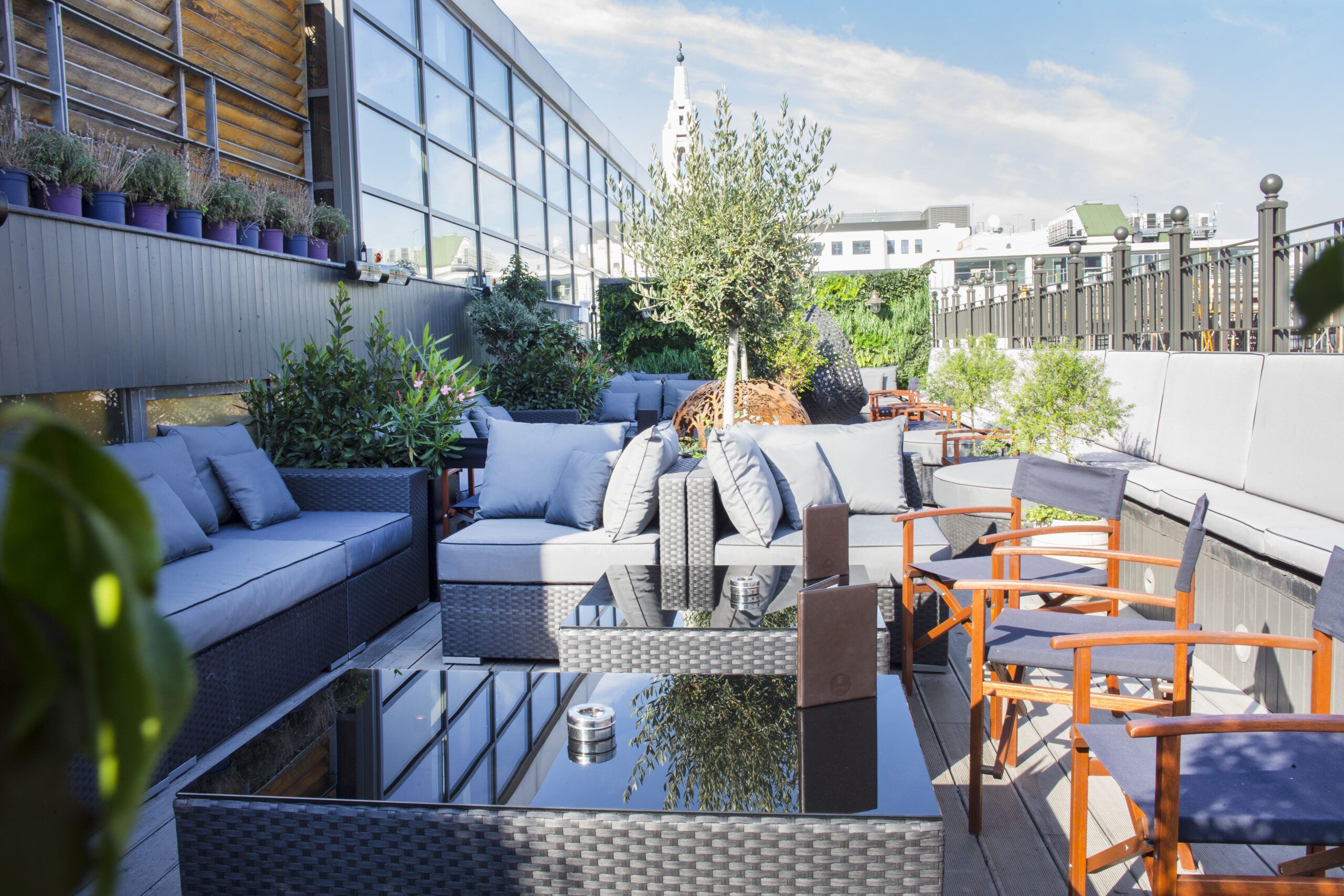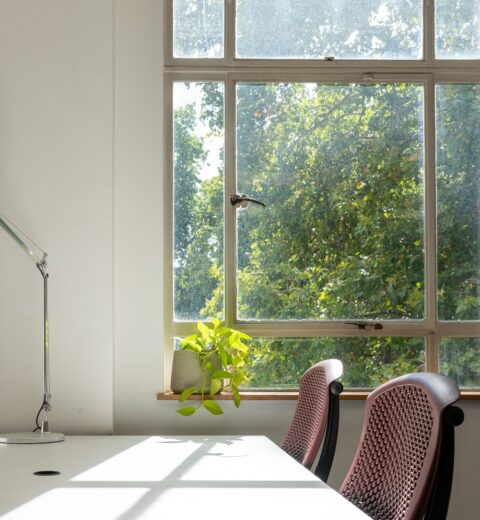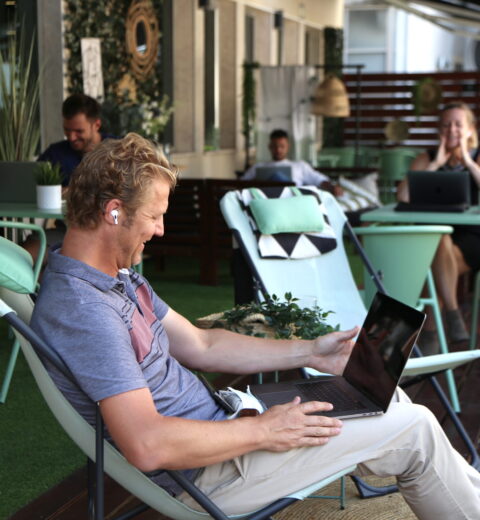Providing a Convenient Space in the Heart of the City :: An Interview With Brandon Kinsman @ Eight Club
Week 6 – London. Welcome to a new week and a new feature in our eOffice Workplace Series. Today we are presenting Eight Club and Pier Paolo Mucelli’s interview with its founder and CEO, Brandon Kinsman.
Eight Club is a private members’ club with two locations in the heart of the City of London – Bank and Moorgate – offering a premium space for its members to work and socialise.
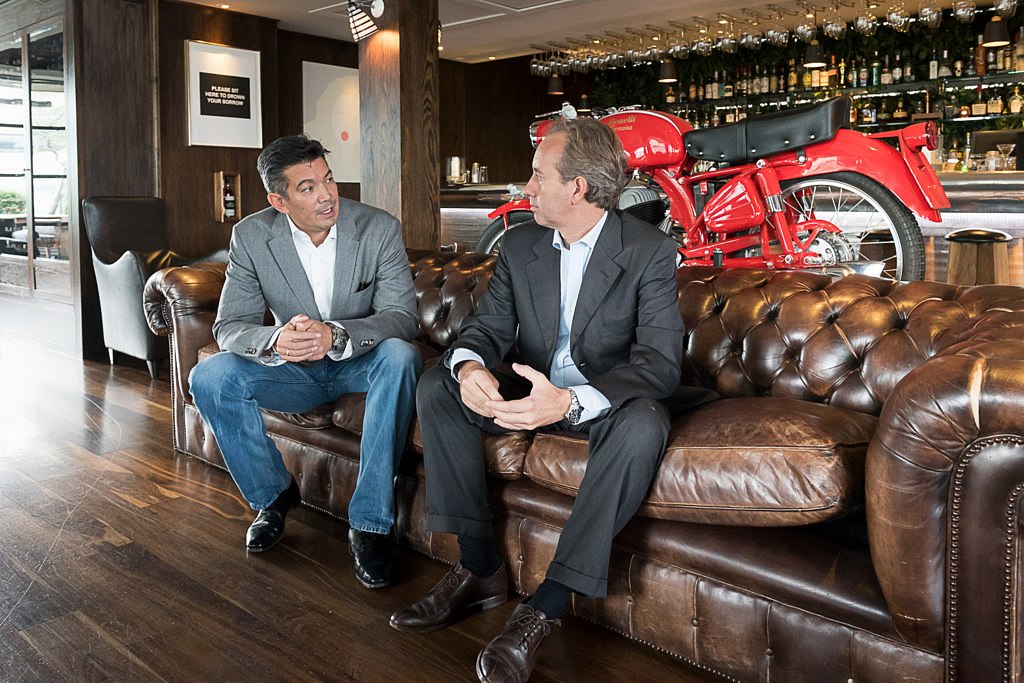
We sit down and Pier begins the interview by asking:
Pier: How did you get the inspiration to set up the member’s club?
Brandon: “It all started with some spare space in a building we owned in the Old City and an initial research of the market which helped us realise there wasn’t a contemporary member’s club within the area. This was quite surprising actually, as there were lots of alumni clubs around, but nothing in the contemporary format. I had previous experience within the hospitality industry, in restaurants and bars, and I actually had my own restaurant for 10 years.”
He continues by explaining how he started working in property development with his brother in law, and how in 2006, they opened the first Eight Club in Bank.
Brandon: “We knew there would be a financially based membership, given the location. I think that a members’ club needs to reflect the location, rather than coming up with a concept and then forcing it on a location. With that in mind, we were very much aware that it had to reflect its position within the Old Square. Although in the beginning, we started with no memberships, we always aimed to design and develop a space where people could work but also have some fun. The idea I had was that members could find a corner, spend their day, have meetings and work, and by the end of the day, they would be able to use the club to entertain. In fact, the purpose was to create a space where people could get away from the city.”
Three years later, in 2009, Eight Club opened its second venue in Moorgate. Brandon explains that people seemed to have warmed up to the idea of a space where they could relax, and not worry about traditional working life and that the open communal spaces with less privacy, was something the City needed.
Brandon: “At this point, we expanded our membership to include both locations, allowing our members to have access and benefit from their different services. The main new service we added, was the element of food: the creation of a proper dining room and restaurant. As the two clubs offer very different environments and space for our clients to conduct meetings and do some work, they work pretty well together.”
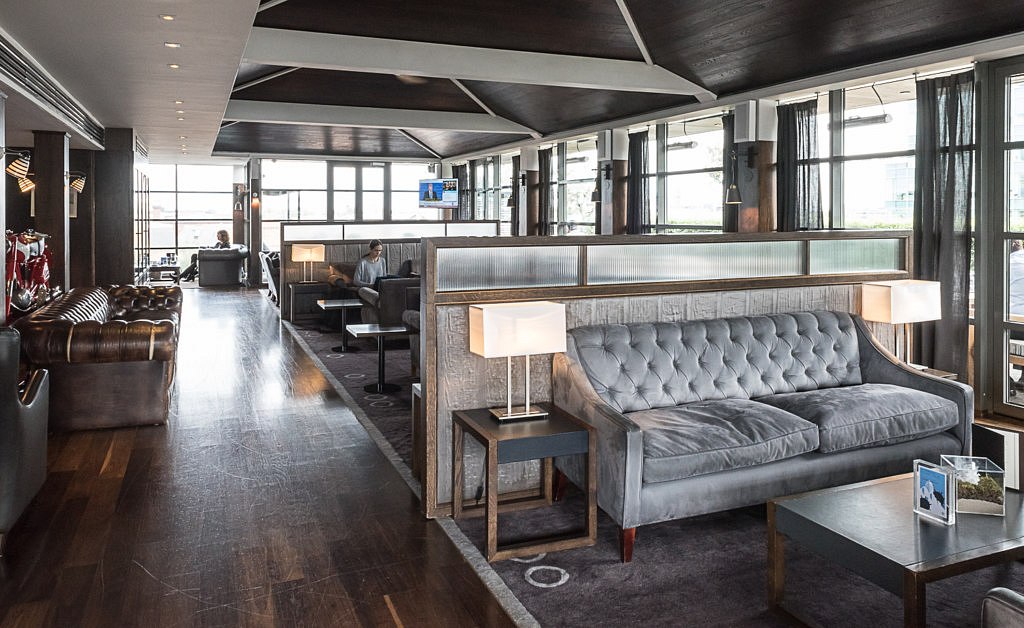
We are interested in knowing more about the spaces, so Pier continues by asking:
Pier: Could you go in more detail through the components of the space in terms of its various elements?
Brandon: “The venue in Moorgate, where we are in now, has three floors, occupying 12,000 sq ft from the fourth to the sixth floor. The original two floors (fifth and sixth) include big terraces, a restaurant seating up to 110 people, a private dining room seating up to 18 people, a library space, meeting rooms and a lounge which includes a communal table used as a coworking area. The latest addition to the club was the fourth floor, consisting of an event space and additional meeting and dining rooms. The event space holds up to 100 people for a conference style meeting space or 170 people standing. It has all the facilities needed in terms of screens, music, and sound, and even its own kitchen and bar.
The venue in Bank, the original club, opened in 2006. It is arranged across 10,000 sq ft, over two floors. Here you find 7 private meeting rooms, ranging from smaller rooms of 6 people up to larger rooms of 24, and there is also a private cinema for product launch and private viewings, seating up to 24 people. This room is also linked to our conference room, which is the largest room in the club. Finally, we have a large members lounge and two bars to both work and entertain.
Regarding the technological side, we have rooms with full AV capacity, as well as high-speed internet in both locations.”
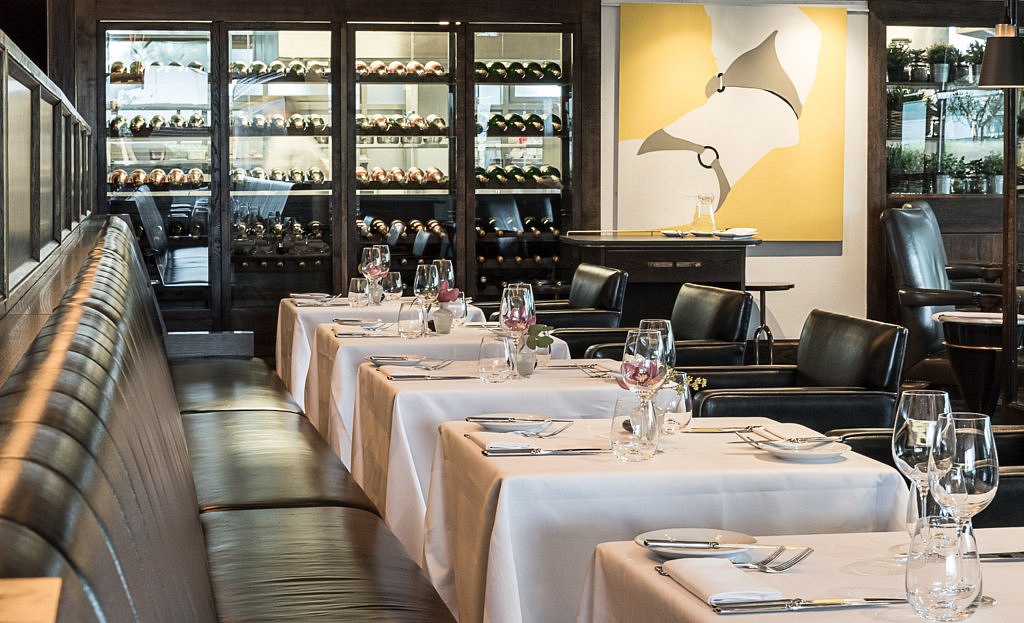
As the conversation moves on, it becomes more design oriented:
Pier: How did you go on about the design? Do you hire architects, interior designers?
Brandon: “No, I come from a relatively creative background familywise: my father was an interior designer and I started working in film, but then I went into this business instead. Actually, I designed the entire area in the clubs; the furniture, everything you see effectively from the cabinets to the screens, and all the tables with our logo on. Finally, I also designed the bar, and I manage the development as well. Of course, it is very labor intensive to carry out this work myself, but it allows me to reduce the costs by going directly to the suppliers. At the same time, it is something that I am very passionate about and that I really enjoy doing.”
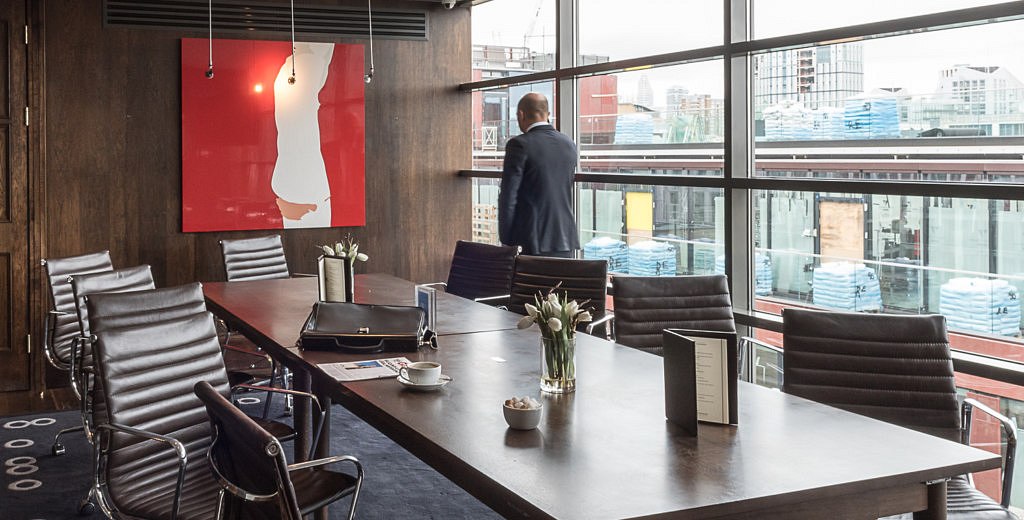
Brandon points out that he has a fantastic team of managers handling the day to day running of both clubs and emphasizes that he tries not to micromanage too much.
Brandon: “My passion is really designing and creating new spaces. I enjoy working with art and photography galleries where I can get inspiration from great designers and figure our what works well together in the clubs. I think the challenge is to make interiors that last. Lots of designs look great initially, but with the day-to-day use, they tend to wear out quite quickly. Therefore, I tend to use materials that age well and get better with time. Actually, when you are your own operator, this makes a big difference, as you are dealing with refurbishments costs, but still want things to look good for as long as possible.”
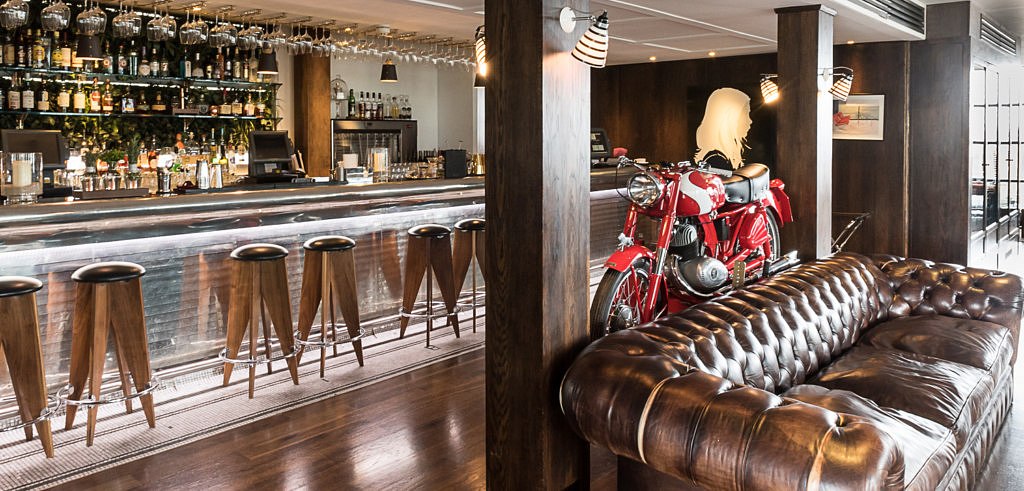
Moving forward with the interview, we start discussing the club members, and Pier asks:
Pier: Could you tell us more about the variety of the community and the services you offer?
Brandon: “Our community consists of different types of companies. We certainly have a lot of self-employed or small groups of 2-3 people, but also members from the larger companies, who come into the club and use the space as an extension of their own offices. Sometimes they like to conduct meetings in a more relaxed atmosphere, outside their traditional meeting rooms and corporate spaces. Furthermore, we see a lot of members that are in here all day as they are starting up new companies and need the space to work on their laptops or meet various clients. In the end, all our members have one thing in common; that they see the benefits of the membership with access to the two clubs.
In terms of benefits, we listen to our members continuously to understand their needs. Further to providing a relaxed business-focused environment, we wish to offer our members a convenient space. To obtain this, it is essential that we understand their needs and what they are looking for. This is where we offer the benefits that separate our members’ club from a traditional working space, a restaurant or a bar: the effects of the community aspects. In fact, this community aspect has taken us 10 years to understand: first of all, for our membership to mature and grow, and secondly, with the feedback from our members. We are now able to provide a tailor-made service. Obviously, we can’t provide for all our 2000 members, but we do try to fulfill the most popular requests, such as providing our members with some sporting elements, a film society, talks with guest speakers, and other events.”
Brandon finishes by pointing out that his goal is to keep his members happy, and says “I think the hardest thing for any business is to maintain their client lists. For us, our number one responsibility is to maintain a high level of renewal rates, but also to ensure that our members use the space on a regular basis.”
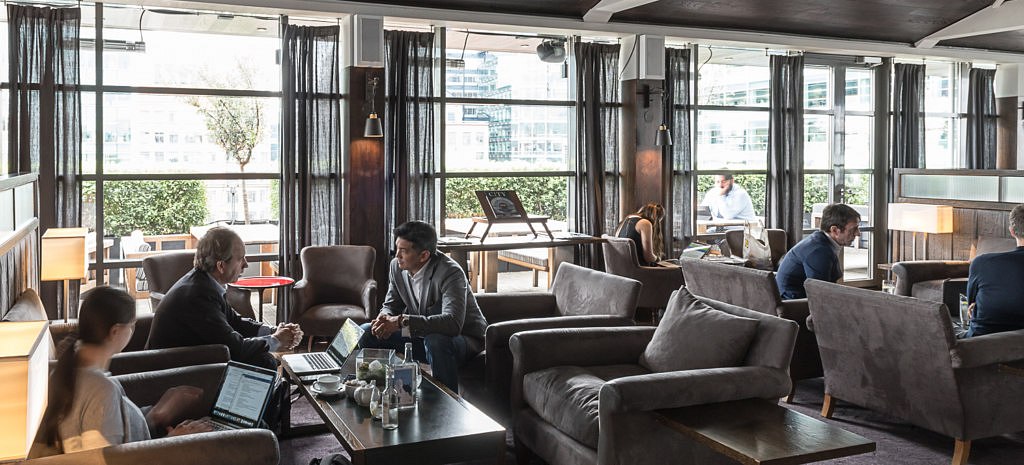
The interview is coming to an end and we finish some questions about the market:
Pier: How do you see the market evolving and growing? Is it getting more competitive?
Brandon: “I believe that the market will grow as it always does. I think it’s important to understand that these businesses don’t fall out of the market because people often think of the paid membership as an easy bargain, but it is actually a really hard thing to maintain memberships in the long term. The defining element is that it has to be convenient. To pay a membership means that people have to see the benefits, and if they don’t, they generally tend not to choose it. Therefore, if you don’t maintain your focus on the product and the values added, you will run out of members to attract and maintain.”
Pier: What do you think are the main challenges and opportunities in the next five to ten years?
Brandon: “You know, I was very disappointed about Brexit, it was very depressing actually, as we have a big community of international and European members, particularly French and Spanish. However, over the last two months, I have started to feel more positive and believe that there will be a balanced approach to UK’s relationship with Europe.
On a different note, from a business and financial point of view, I’m quite positive about the next five years because I am certain that this sector will grow. I find the integration between communal workspace and memberships quite exciting. It almost goes against the idea of Brexit, as it encourages people to work together and create hives like ours. I think that is really great and exciting, and promising for the future.”
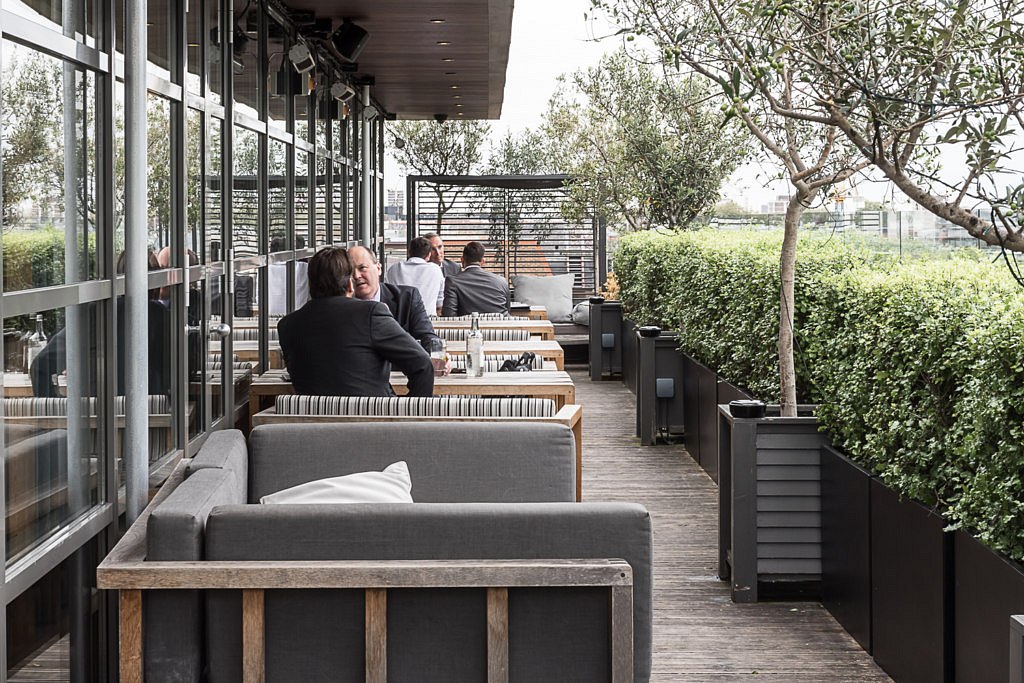
Keep updated for next week’s feature withNatasha Guerra, one of Runway East’s three founders.
